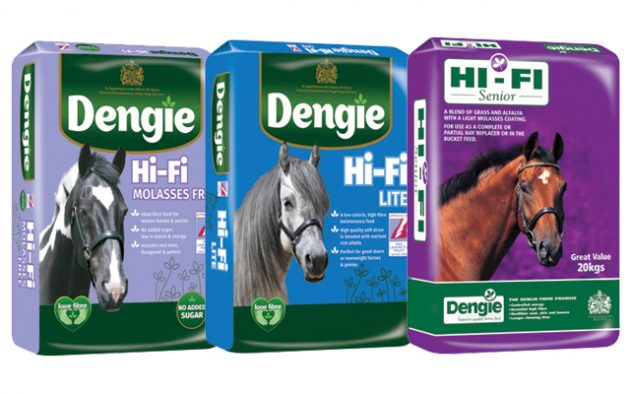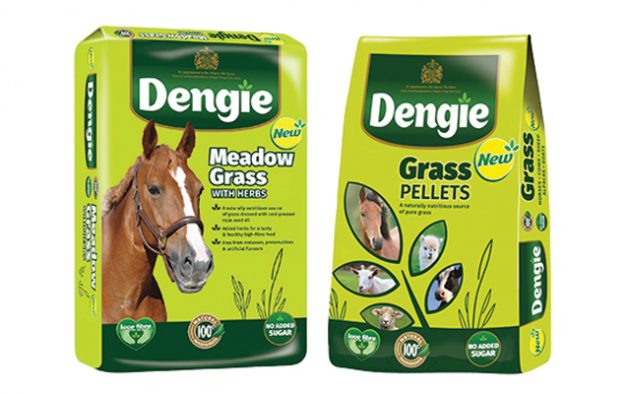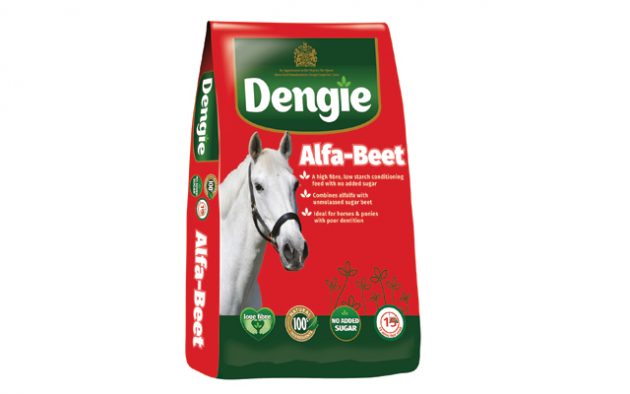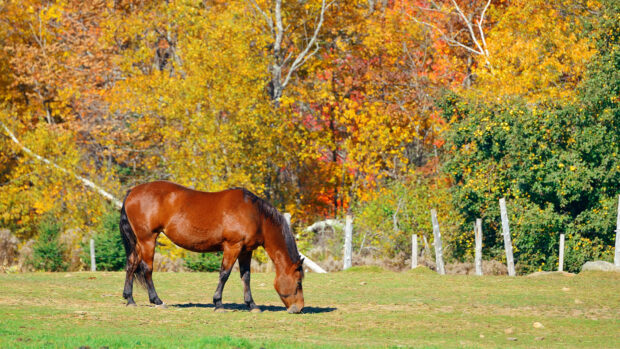Promotional feature with Dengie
The unusually hot and dry conditions of the 2018 summer meant that the amount of hay and haylage made was much less than normal. The lack of grass also meant that horse owners started feeding forage earlier too and so many of us are now facing winter with much less hay in the shed than we need! The good news is that Dengie’s range of fibre feeds can be used as partial or total hay replacers and so help is at hand.
What happens if I don’t feed enough forage?
- Weight loss is a most common problem if a horse simply hasn’t got enough to eat
- A lack of fibre to maintain normal gut motility can result in colic
- The horse may start to chew wood instead as he seeks out fibre – in extreme cases, horses may eat their own droppings
- Fibre tends to give droppings structure and so if insufficient is consumed, it may result in loose faeces
- Equine Gastric Ulcer Syndrome is associated with insufficient forage intake
What to look for in a forage replacer:
- Ideally a forage replacer should be nutritionally similar to hay; high in fibre, with low starch levels.
- Check whether a feed can be used to partially or totally replace the forage ration – chopped fibre feeds can be high in oil or particular minerals, which may mean they are best used as partial replacers
- For laminitis-prone individuals, such as those with EMS or PPID, choose forage replacers with less than 10% sugar and starch added together.
The following table lists the Dengie feeds that can be used as forage replacers
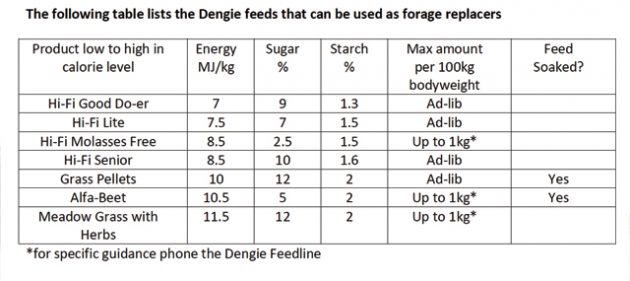
How to feed a forage replacer
- Replace forage on a weight for weight basis. At minimum all horses should have 1.5% of their bodyweight on a dry matter basis of fibre based feeds daily, e.g. 7.5kg for a 500kg horse.
- Divide forage replacers into smaller meals to increase feeding time. As hay replacers are fibre-based it is appropriate to leave a larger amount to eat e.g. overnight, when it is not practical to split meals.
- Feed forage replacers in a large trug or preferably several trugs around the stable to encourage foraging behaviour.
- To slow the rate of eating, use a large football or some very large smooth pebbles on top of the feed to help slow the rate of consumption.
- Adjust the amount of hay replacer given according to the amount of grazing access and your horse’s bodyweight.
Any dietary changes should ideally be done gradually increasing the quantity of new feed used over the period of a couple of weeks.
For feeding advice contact the Dengie Feedline on 0845 345 5115 or complete our feeding advice form.

